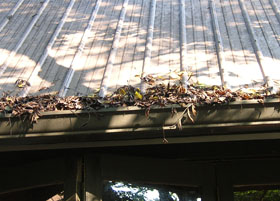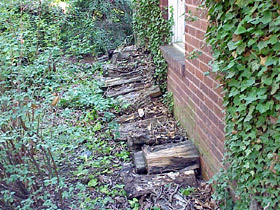MN Pest Control | Carpenter Ants
Ants are known as busy insects that are always organizing into little farms and colonies but there’s more to them than just that. They can keep down other insects that can be pests to humans, gather seed plants, and store them underground for food. On the other hand, they can be quite annoying and will search for food where humans are and even bite or sting.
Continued from Part 2
Ants belong to a family called the Formicidae and are close relatives to the bees and wasps. Ants are also without a doubt, the number one pest problem in the country. All ants have a basic structure and are divided into three parts: the head, the stomach, and the thorax, which lies between the head and the abdomen.
They are found almost everywhere in the world, except in the coldest regions. They tend to be found in tropical forests and in areas where there is sweet food, whether it be flowers, plants, or fruits.
Ants are called socials insects because they live together in colonies that can contain from a dozen ants to thousands of ants. It usually depends on the species and they generally work and live together. Out of 8,000 species, there are thief ants, slave ants, and even “pet” ants, where they allow the guest insects to go into their nests and take care of them. They may even be the most numerous of all the insects. For example, in the Amazon rain forest, there are over 3,500,000 ants per acre. Scientists estimate that there are one quadrillion (1,000,000,000,000,000) ants living on the earth at any given time. Yikes!
The social colonies formed by bees and ants are among the most complex societies on earth, which may contain millions of individual insects; all programmed with a simple rule set that describes their every motion through every stage of their lives. Leaderless. Commanded and guided with pheromones and other communicative chemicals generated by her peers and her queen, these little suckers are indeed masters of their environment.
Some insects present only a minor concern and then there are those that can cause serious problems and nearly always require a professional exterminator’s attention. Carpenter Ants are one of them! Because they are such highly adaptable creatures, they are extremely difficult to control once they have infested an area.
Preventing Carpenter Ant Problems

Remove leaves and other debris that clog gutters. Clogged gutters may lead to wood rot problems on fascia and soffits.
Anytime there are trees, stumps or other wood items around our home, there is always the potential for a carpenter ant problem. However, there are important steps that you can take now to prevent carpenter ants from becoming a problem. Prevention starts with common sense and inspection, not with a monthly or periodic pesticide application. Proper maintenance of your home and surroundings greatly reduces the likelihood of a carpenter ant problem. The key point to remember is that carpenter ants are usually associated with moisture, particularly where wood is involved:
- Check for moist, soft or rotting structural wood. Pay particular attention to:
- attics, roof edges, eaves and gutters
- flashing around chimneys, porch or deck roofs
- porch roofs, railing and columns
- door and window frames
- Keep gutters and downspouts clear of debris so that rainwater does not dam up and overflow, possibly damaging fascia boards.
- Repair dripping outdoor water spigots or other plumbing leaks that might attract foraging ants.
- Maintain proper drainage around the exterior of your home.
- Whenever wood must be in direct contact with soil or masonry (e.g., when installing landscape timbers, porch columns, decking, fencing, etc.), use the correct type of pressure-treated lumber.
-

Never stack wood near or against your home. It can lead to problems with termites, carpenter ants and other pests.
Repair cracks in your foundation that provide easy access for the ants (and termites, as well).
- Keep your crawlspace dry and well-ventilated. A properly installed vapor barrier will help.
- Never stack firewood on your porch and deck, or against the side of your home, or in a garage. Keep firewood stacked up off the ground for easier inspection.
- Keep tree limbs and shrubs pruned back away from your house. This helps prevent damage to siding and the roof, reduce moisture problems, and keep ants from getting onto the roof and invading the house.
- Remove nearby trees that are dead or in poor health. Get advice from a tree specialist about the health of the trees surrounding your home.
Ant control is one of the single most challenging pest control issues out there. Unfortunately, choosing any single method of extermination is setting yourself up for failure. All ants live for the same goal; they ensure by any means that their family lives on. Ants are just too geared towards survival for any one method to do the trick.
A thorough inspection of a home and yard can reveal potential infestation problems and possible solutions for the infestation. It is also important to seek out any moisture problems in the home. Check for condensation problems and leaks and have them repaired as quickly as possible. That will prevent them from coming back!
If you think you may have a Carpenter Ant problem, call a Minnesota Pest Control Exterminator today for a free consultation. They will diagnose the problem and begin immediately with treatments.




